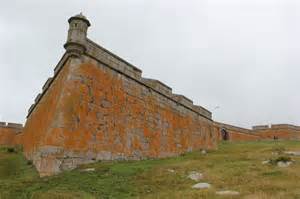La Boca
South of San Telmo is colourful La Boca. It’s walking distance, but I’d only do it during the day as even then, it’s the only time I ever felt on edge in Buenos Aires. La Boca sits on the wharfs and despite being separated from the city by poor and neglected neighbourhoods, it’s the city’s most touristy place. We visited after about a month in Buenos Aires and had wondered where all the tourists were! The amount of them came as a bit of a shock, and so did the prices!
When I say colourful I mean literally! Brightly painted houses and restaurants line the streets and a small plaza. Guitarists and dancers perform and rope tourists into joining a tango (not us!). Most restaurants have a small stage for dancers, but avoid the crowds, prices and souveneir sellers and grab a table at a quieter tango bar around the plaza in San Telmo. La Boca is fun though and definitely worth an afternoon visit.

Once
Other than being the place to buy cheap electronics and other items from the dozens of street sellers, Once is Buenos Aires’ Jewish neighbourhood. Our visit was motivated by our desire for different food and we weren’t disappointed. There are many kosher delis and stores and, the world’s only kosher McDonalds! We didn’t partake.
Once is also home to Teatro Ciego; the Blind Theatre. We missed out on a show, but I think it would be a cool experience and it’s pretty cheap. It would help to have a fairly good grasp of Spanish though, as the theatre is 100% aural. I read that the room is pitch black and you eat your meal from shared plates with your hands. I think all the performers are blind too.

Chinatown
I was excited to visit Chinatown for a few reasons. Buenos Aires, like Argentina enerally, isn’t very multicultural (at least in the way I’m used to in Melbourne). There are Spanish and Indigenous Argentines, people from South America and a strong Italian influence (if not community), but not many other significant groups breaking through what is a mostly homogenous culture. So when we visited Chinatown I was looking forward to a different side of the city that at the same time, was familiar. More importantly, I went for the spices. Food in Argentina isn’t spicy even when it says so and having grown up and lived in Mebourne’s most Asian suburbs (Springvale and Footscray), I was in need of something hot!
If Chinatown was easier to get to, I would have gone more often to try more restuarants and shop at their markets. As it was, we went just the one time and had a slightly disappointing Chinese meal. Chinatown is not officially a barrio like the others, but the residents are campaigning for it and I think they’re pretty close. If you’ve been to Melbourne’s Chinatown or maybe San Francisco’s, Buenos Aires’ Chinatown will be a bit of a let down. If you’re from Canberra however, you’ll love it.
Near San Telmo…
Heading east from San Telmo one afternoon, beyond where the Sunday market ends, we felt a little like we were crossing to the other side of the tracks. There’s western style restaurants and a modern cinema complex where movies are cheap and usually dubbed. Melbournians will know what I mean when I call the area ‘Docklandsesque’. I got that same sterile, souless feeling as if I’d arrived in a ghost town or one that had never quite fulfilled the hopes of its developers and was now unlikely to. It turns out my instincts were accurate; my Spanish teacher confirmed that the area used to be industrial wharfs and that people only really like it for roller-blading and jogging et cetera.











